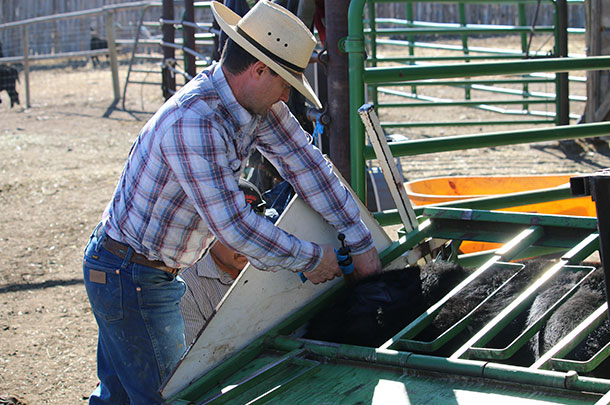Quality products to care for our animals are critical to success. There are numerous options available in the marketplace today, and accurate information should be used to choose the products we put in our “toolbox.”
The first step in choosing the correct tools is understanding what type of drug is being used. The best way to accomplish this is to read the label. This action, combined with seeking advice from your local veterinarian or animal health professional, should ensure you are using the correct, approved product.
The Food and Drug Administration (FDA) oversees the approval and use of drugs in animals and people. Two of the approvals the FDA reviews for animal drugs are the New Animal Drug Application (NADA) or Abbreviated New Animal Drug Application (ANADA). The main difference between the two is that one is considered a pioneer drug (NADA) and the other a generic drug (ANADA).

An FDA-approved drug will have a NADA or ANADA number on the label. Products such as vaccines and some insecticides will not have a NADA or ANADA on their label, as they are regulated by the USDA or EPA, respectively. This may seem a bit confusing, as there is not one agency that regulates all products used in animal health.
Confusion also exists surrounding generic and pioneer drugs in the marketplace. Generic alternatives to pioneer drugs are a key component of the animal health industry. There are already any number of generic versions of animal drugs on the market today. The key is to understand the real difference between a generic and pioneer drug.
First, it is important to remember that all FDA-approved products, pioneer and generic, go through a rigorous review process. Generic drugs are manufactured under the same stringent guidelines as pioneer drugs. In fact, they are sometimes produced in the same production facility. Both generic and pioneer drugs are reviewed by the FDA and have met the FDA’s strict standards for safety and effectiveness.
Generic drugs are identical to pioneer drugs in that they are required by law to contain the same:
- Active ingredient
- Strength
- Dosage form
- Dosage regimen
One misconception is that generics drugs do not contain the same amount of active ingredient as the pioneer. As noted previously, the FDA-approved generic drug must contain the same strength of active ingredient as the pioneer. The confusion stems from live animal testing requirements that allow for individual variation among test animals. The same variations are applied to both the pioneer drug and the generic. The bottom line is the concentrations of the drug is required by law to be the same in both products.
Since the Generic Animal Drug and Patent Term Restoration Act (GADPTRA) was signed into law in 1988, there have been strict requirements for approval of generic drugs used for animals. Generic copies are a legal alternative to approved brand name animal drugs. The final point is that animal generic drugs, as with human generic drugs, may offer an economic benefit without compromising quality. ![]()
PHOTO 1: Both generic and pioneer drugs go through a rigorous review process required by the government so that both can be utilized in herds. Staff photo.
PHOTO 2: FDA-approved generics must contain the same strength of active ingredient as the pioneer drug. Photo by David Cooper.

-
Eric S. Moore
- Director of Technical Services – North America
- Norbrook Inc.









